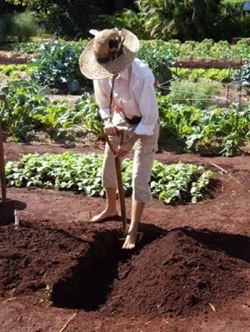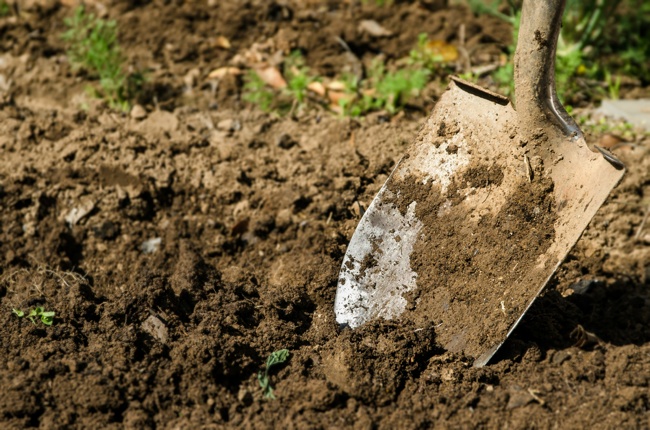We may earn revenue from the products available on this page and participate in affiliate programs. Learn More ›
Quality, nutrient-rich aerated soil is the foundation of a good garden. Sure, the “no dig” gardening method has its adherents, but if you wish to reap the many rewards of soil aeration, digging is a must.
Forget the rototiller; this tool not only compacts the soil, which is expressly not the goal of aeration, but also breaks up the soil aggregate (sand, clay, and so on), undermining the structure that promotes plant health.
In my opinion, the best way to till a garden is through a process called double digging, which preserves the aggregate and leads to vivacious veggies, flourishing fruits, and beautiful blooms. So how’s it done?
1. Trench Planning
You’ll be digging a trench the length of your garden, one foot wide and one foot deep. Before you begin, make sure you have the right spade for the job at hand; most appropriate for trench work is either a drain spade or a wide-blade garden spade.

2. Getting Started
At the start of your imagined trench, insert your spade into the soil, pushing down about one foot below the surface. Gently scoop the dirt onto the blade of your spade, depositing the earth into a wheelbarrow.
3. Completing the Trench
Continue shoveling out your one-foot-deep trench. Avoid standing in the trench as you go; doing so compacts the soil. To better distribute your weight, you may opt to stand on a sheet of plywood or particle board.
Related: How to Grow Picture-Perfect Sunflowers at Home
4. Aerate the Trench
Aerate the soil at the bottom of the trench by twisting a sturdy garden fork side to side, breaking up hard clumps, to a depth of about one foot. Do not remove this layer of subsoil; it must be treated with care.
5. Add Compost
Fill the aerated trench with your choice of nutrient-rich, zone-appropriate compost. If the area is to be left fallow for the season, you might even consider adding fresh horse manure.
6. Trench Two
Dig out a second trench next to the initial one. As you remove soil from the second trench, place it upside down onto the compost you’ve added to the first trench.
7. Finishing Up
Trench by trench, proceed to till the total surface area of your garden. Be sure to use height-appropriate gardening tools; tools that are too long or too short can make soil turning into backbreaking work. This is supposed to be fun!
Vintage garden tools, which I find much sturdier than most of today’s mass-produced ones, may be purchased through online auctions (good for box lots of hand tools) or yard sales (good for avoiding the shipping costs on bigger diggers).
A great opportunity to make use of your homegrown compost, double digging has been trusted for centuries and has always yielded the best results in my garden.

